Project Jukebox Survey
Help us redesign the Project Jukebox website by taking a very short survey!
The Iditarod National Hist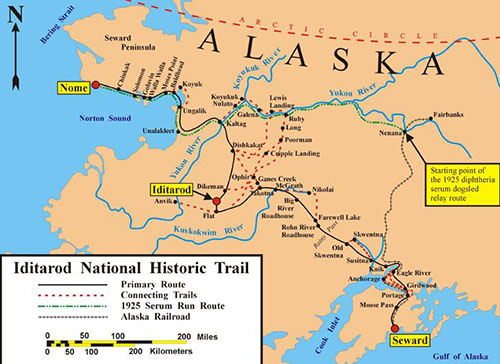 oric Trail recognizes a 2,400-mile system of winter routes that first connected ancient Native villages and later opened Alaska to the last great American gold rush. The Seward to Nome Trail was first scouted in 1908 by an Alaska Road Commission crew on dog teams led by Superintendent Walter L. Goodwin. By 1912, thousands of prospectors, mail carriers, and freight shippers were mushing, snowshoeing or skiing the trail to get to the gold fields at Iditarod and Flat, Alaska. The trail fell into disuse after the end of the gold rush. The Iditarod Trail was designated as a National Historic Trail in 1978.
oric Trail recognizes a 2,400-mile system of winter routes that first connected ancient Native villages and later opened Alaska to the last great American gold rush. The Seward to Nome Trail was first scouted in 1908 by an Alaska Road Commission crew on dog teams led by Superintendent Walter L. Goodwin. By 1912, thousands of prospectors, mail carriers, and freight shippers were mushing, snowshoeing or skiing the trail to get to the gold fields at Iditarod and Flat, Alaska. The trail fell into disuse after the end of the gold rush. The Iditarod Trail was designated as a National Historic Trail in 1978.
The Iditarod National Historic Trail Project Jukebox was commissioned by the Iditarod Historic Trail Alliance in 2021 to document the history of the trail's national trail designation and its cooperative management. The Trail Alliance is a statewide non-profit that was formed in 1999 to promote trail stewardship. In collaboration with the Bureau of Land Management, who is the trail manager, the Alliance advocates for trail protections and expands public understanding of the trail and it's important place in Alaska's history.
People
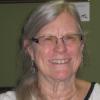 |
Judith "Judy" Bittner |
Judith "Judy" Bittner is the State Historic Preservation Officer for the State of Alaska and head of the Office of History and Archeology in the Alaska Department of Natural Resources. She first served on the Iditarod Trail Advisory Council in the 1980s as the state's representative. She continued her involvement when the Council sun-setted and the Iditarod Historic Trail Alliance was formed in 1999. Judy currently serves as executive director of the Trail Alliance. |
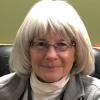 |
Sharon Long |
Sharon Long has lived in Alaska since the early 1970s. She attended college at the University of Alaska and Alaska Methodist University, was a graphic artist, and worked for the Alaska Department of Education and Department of Natural Resources. She was a member of the resource planning team for the Federal-State Land Use Planning Commission who was reviewing land selections after passage of the Alaska Native Claims Settlement Act in 1971, and for the Wild and Scenic Rivers studies. In 1976... Read More |
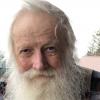 |
Lee Poleske |
Originally from Iowa, Lee Poleske came to Seward, Alaska in 1964 to take a position as a high school social studies teacher. He went on to teach Spanish and photography, as well. He retired from teaching in 1990, but continued to serve the community. Being interested in history, Lee joined the Resurrection Bay Historical Society in 1966, served as the organization's president for a time, and was the volunteer director of the Seward Museum, a collaborative partnership with the City of Seward... Read More |
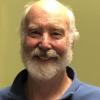 |
Pat Pourchot |
Pat Pourchot came to Alaska in 1972 from Denver, Colorado. He worked for the U.S. Bureau of Outdoor Recreation on land issues related federal conservation units (known as D-2 lands) as outlined in the Alaska Native Claims Settlement Act (ANCSA) and the subsequent Alaska National Interest Lands Conservation Act (ANILCA). His primary duties included the study of areas for possible designation as Wild and Scenic Rivers and National Historic Trails. He also has worked as a land planner for the... Read More |
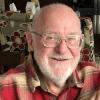 |
Leo Rasmussen |
Originally from Michigan, Leo Rasmussen came to Alaska in 1962 to attend the University of Alaska in Fairbanks. In the summer of 1963, he did fishery work for the Alaska Department of Fish and Game in Nome, and in the spring of 1964 he worked on the North Slope doing test drilling for oil development. His 1963 summer experience got him interested in life in rural Alaska, so he moved to Nome in 1964. Leo quickly became enthralled with dog mushing and in 1973 got involved with the Iditarod Dog... Read More |
 |
Dan Seavey |
Originally from Minnesota, Dan Seavey moved to Seward, Alaska in 1963 for a job as a high school social studies teacher. Dan and his wife, Shirley, moved to a homestead on Old Exit Glacier Road in March 1964, where they continue to reside. Dan became involved in dog mushing and dog racing, ran the first Iditarod Trail Sled Dog Race in 1973, and operated a sled dog tour business in Seward. His sons and grandsons continue to be involved in sled dog racing and dog tour operations. From the late... Read More |


